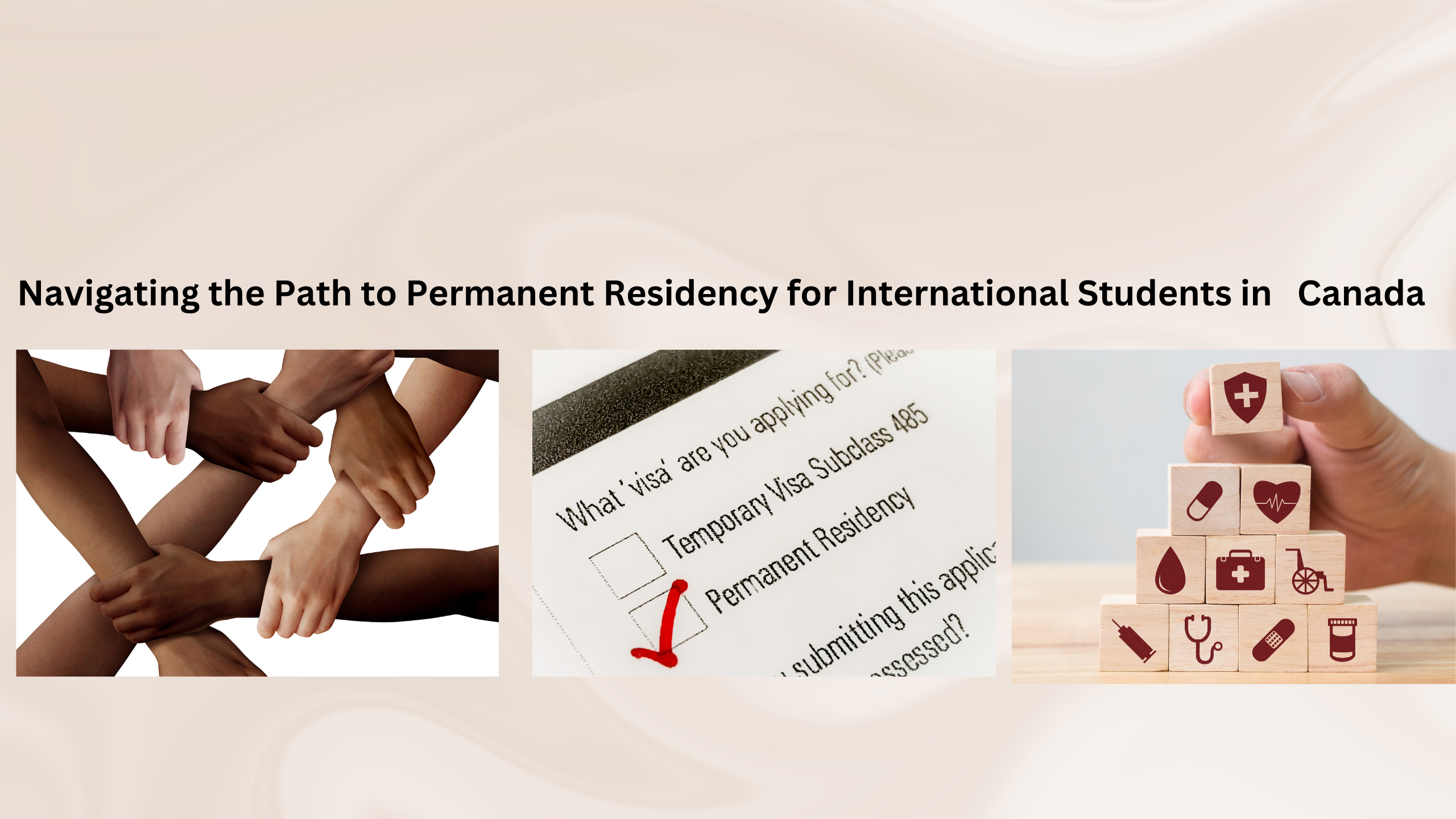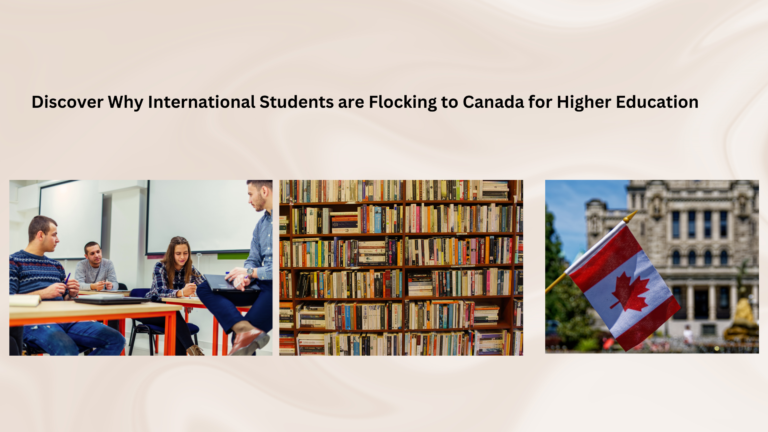What is the Process for International Students to Obtain Permanent Residency After Studying in Canada?
Introduction
International students often seek permanent residency (PR) in Canada after completing their studies to build a career and life in the country. The Canadian government offers several immigration pathways designed specifically for students, making Canada one of the most attractive countries for study and post-graduation opportunities. In this article, we’ll break down the PR process, explore different immigration streams, and provide tips to increase your chances of success.
Understanding the Path to Permanent Residency
Study Permit to Post-Graduation Work Permit (PGWP)
The journey begins with obtaining a Study Permit, which allows international students to pursue their education in Canada. Upon graduation, students may be eligible for a Post-Graduation Work Permit (PGWP), which is essential for gaining Canadian work experience—a key factor in many permanent residency pathways.
Canadian Experience Class (CEC)
One of the most common routes is the Canadian Experience Class (CEC) under the Express Entry system. This program is designed for individuals who have gained skilled work experience in Canada and wish to become permanent residents.
Provincial Nominee Programs (PNPs)
Another viable option is the Provincial Nominee Programs (PNPs), where provinces and territories nominate individuals for permanent residency based on their specific labor market needs.
Atlantic Immigration Pilot Program (AIPP)
For those studying in Atlantic Canada, the Atlantic Immigration Pilot Program (AIPP) offers a streamlined path to permanent residency for graduates from designated educational institutions.
Advantages and Disadvantages
Advantages
- High Quality of Life: Canada consistently ranks high in global quality of life indices, offering excellent healthcare, education, and public services.
- Diverse Job Market: With a robust economy, Canada provides ample job opportunities across various sectors for skilled professionals.
- Cultural Diversity: Canada’s multicultural society is welcoming and inclusive, making it easier for international students to integrate.
- Pathway to Citizenship: Permanent residency is a stepping stone to Canadian citizenship, granting full rights and privileges.
Disadvantages
- Competitive Process: The immigration process can be highly competitive, with many applicants vying for limited spots.
- Lengthy Procedures: Some pathways to permanent residency involve lengthy application processes and waiting periods.
- Financial Costs: Application fees, legal assistance, and other associated costs can be significant.
- Eligibility Criteria: Meeting the specific eligibility requirements for each program can be challenging and may require careful planning.
Problems and Concerns
Navigating Complex Immigration Laws
Canada’s immigration system is intricate, with various programs each having distinct criteria and processes. Understanding these nuances can be overwhelming for international students.
Maintaining Status
Students must ensure they maintain their legal status throughout their studies and work permits. Any lapse can jeopardize their chances of obtaining permanent residency.
Financial Constraints
The costs associated with applications, language tests, and other requirements can be a significant barrier for many students.
Limited Job Opportunities
While Canada has a strong job market, securing employment that aligns with one’s qualifications and experience can be challenging, impacting eligibility for certain residency programs.
Dos and Don’ts
Dos for International Students
- Do Research Thoroughly: Understand the different permanent residency pathways and their requirements.
- Do Gain Canadian Work Experience: Utilize the PGWP to gain relevant work experience, which is crucial for many PR programs.
- Do Improve Language Skills: Achieving high scores in English or French language tests can significantly enhance your application.
- Do Seek Professional Advice: Consider consulting with immigration experts to navigate the application process effectively.
Don’ts for International Students
- Don’t Overlook Deadlines: Missing application deadlines can result in missed opportunities for permanent residency.
- Don’t Provide False Information: Ensure all information in your application is accurate and truthful to avoid disqualification.
- Don’t Neglect Documentation: Properly prepare and organize all required documents to streamline your application process.
- Don’t Assume One Path Fits All: Choose the PR pathway that best aligns with your individual circumstances and goals.
FAQs About Obtaining Permanent Residency
- What is the first step for international students seeking permanent residency in Canada? The first step is to obtain a valid Study Permit to pursue your education in Canada, followed by securing a Post-Graduation Work Permit (PGWP) after graduation.
- How long does it take to get permanent residency after graduation? The timeline varies depending on the pathway chosen. For instance, the Canadian Experience Class under Express Entry can take approximately six months once you receive an Invitation to Apply (ITA).
- Do I need a job offer to apply for permanent residency? While a job offer can enhance your application, it is not always mandatory. Programs like the Canadian Experience Class focus more on your Canadian work experience.
- Can I apply for permanent residency while on a PGWP? Yes, you can apply for permanent residency while holding a PGWP, especially if you qualify under programs like the Canadian Experience Class or Provincial Nominee Programs.
- What languages are required for permanent residency applications? Proficiency in English or French is required, typically demonstrated through standardized language tests like IELTS or CELPIP for English and TEF for French.
My Advice
Embarking on the journey from an international student to a permanent resident in Canada requires careful planning and dedication. Start by understanding the various pathways available and choose the one that best aligns with your career goals and personal circumstances. Gain as much Canadian work experience as possible, improve your language skills, and stay informed about any changes in immigration policies. Networking with professionals and seeking guidance from immigration experts can also significantly enhance your chances of a successful application. Remember, persistence and strategic planning are key to navigating this complex process.
Conclusion
Transitioning from an international student to a permanent resident in Canada is a structured and achievable process, provided you understand the necessary steps and requirements. By leveraging the Post-Graduation Work Permit, gaining relevant Canadian work experience, and choosing the right permanent residency pathway, you can set yourself on a path to making Canada your permanent home. While challenges exist, the advantages of living and working in one of the world’s most welcoming countries make the effort worthwhile. Stay informed, be proactive, and take advantage of the resources available to turn your Canadian dream into reality.







